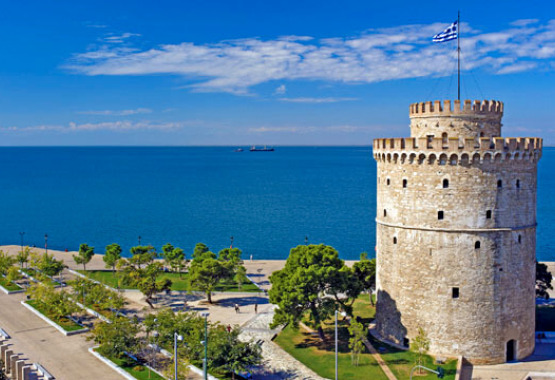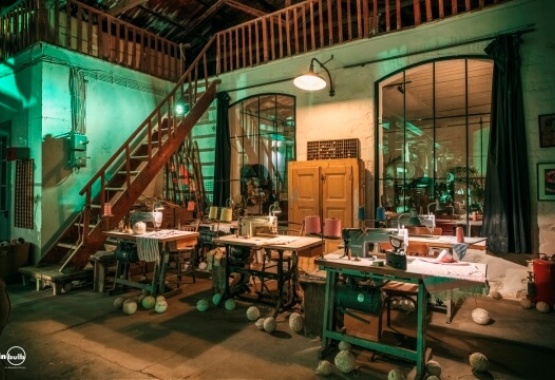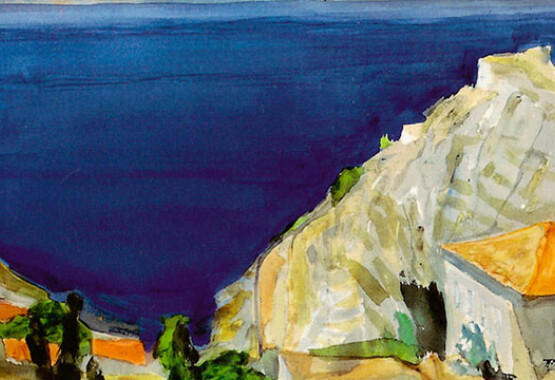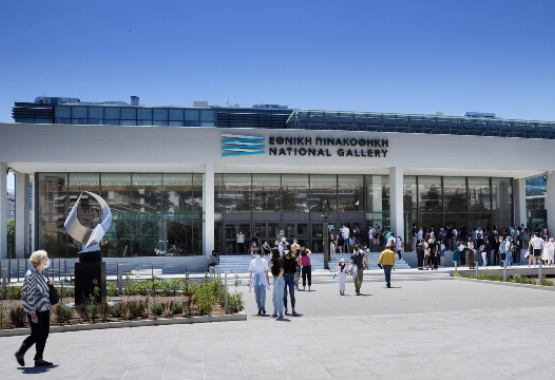
THESSALONIKI
Highlights: The mould of "macedonian ouranopithikos" skull parts and a copy of the famous skull of Petralona from 200,000 BC!
Tip: Do you need more information on the exhibits? Don't hesitate to open the little drawers beneath the displays with additional information for enthusiastic Prehistory lovers!
Highlight: The funerary stele of a girl with dove from Nea Kallikratia in Chalkidiki, is a true masterpiece of classical art. The expression of grief on the girl’s face will move your heart...
Tip: Listen to an ancient melody thanks to the transcription of the musical symbols found on an inscription of the 3rd century. B.C. from Vrasna, Thessaloniki!
Highlight: The magnificent Mosaic floor depicting Ariadne on Naxos from the 3rd century A.D. and the elegant bird-shape perfume vases made of colourful glass.
Tip: Observe the majestic statue of Octavianus Augustus, a characteristic sample of the "imperial propaganda" which depicts the emperor as a young handsome man. The portrait resembles more an Olympian God than the true image of the emperor.
Archaeological Museum of Thessaloniki
The Archaeological Museum of Thessaloniki invites you to an exciting journey to the past of the charming capital of the North.
History magically unfolds in the museum halls revealing precious treasures made of gold, unique works of art and everyday objects from prehistory to late antiquity. Follow its track…Prehistoric Macedonia
Take a deep breath and dive into the past, as the Museum's tour begins from the lower level, with the exhibition "5000, 15000, 200000 years ago". The exhibition deals with every day life in prehistoric times. Observe the first creations of the prehistoric man, its first vessels (which include a baby bottle), tools and jewellery and learn everything about the prehistoric household thanks to an audiovisual installation.Highlights: The mould of "macedonian ouranopithikos" skull parts and a copy of the famous skull of Petralona from 200,000 BC!
Tip: Do you need more information on the exhibits? Don't hesitate to open the little drawers beneath the displays with additional information for enthusiastic Prehistory lovers!
Towards the birth of cities
Discover the findings of the first settlements of the Iron Age in the region which expands from Mt. Athos to Mt. Olympus and follow the course from the early efforts of urban planning to the genesis of the ancient cities.Macedonia from the 7th century BC until late antiquity
Get to know all about the economy, politics, social organization, religion, art and everyday life of the inhabitants of the ancient Macedonia from the Archaic Period to the Roman Times.Highlight: The funerary stele of a girl with dove from Nea Kallikratia in Chalkidiki, is a true masterpiece of classical art. The expression of grief on the girl’s face will move your heart...
Tip: Listen to an ancient melody thanks to the transcription of the musical symbols found on an inscription of the 3rd century. B.C. from Vrasna, Thessaloniki!
Thessaloniki, Metropolis of Macedonia
Wander around the Roman monuments of the city and get familiar with the people who had a key role on its history: Cassandros' wife, Thessaloniki who gave her name to the city, Alexander the Great and all the Roman emperors who left their mark on the city!Highlight: The magnificent Mosaic floor depicting Ariadne on Naxos from the 3rd century A.D. and the elegant bird-shape perfume vases made of colourful glass.
Tip: Observe the majestic statue of Octavianus Augustus, a characteristic sample of the "imperial propaganda" which depicts the emperor as a young handsome man. The portrait resembles more an Olympian God than the true image of the emperor.




